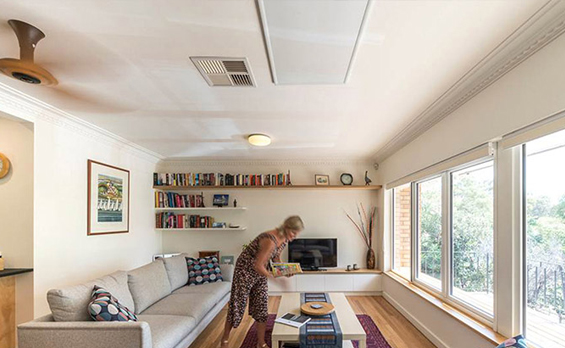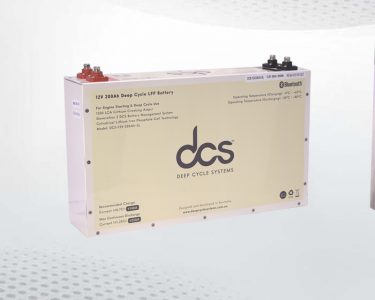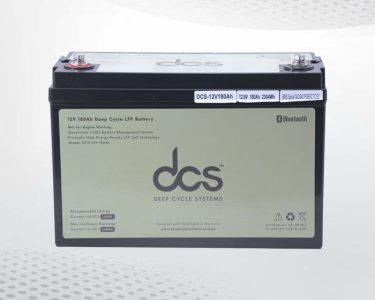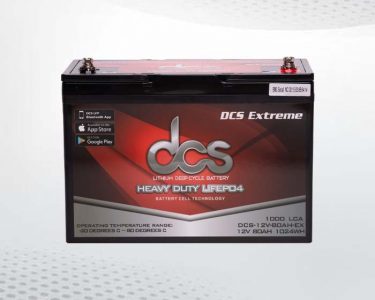A house fresh-air system is an essential component of any modern home. It is designed to provide continuous clean and fresh air, ensuring a healthy and comfortable living environment. This comprehensive guide will delve into the importance of having a fresh air system for your home and how it works. They will also discuss the various fresh air-exchange systems available, their benefits, and which one might be the best fit for your household. So whether you are looking to improve the air quality in your home or want to learn more about fresh air systems, this guide has got you covered. Keep reading to discover all you need about House Fresh Air System.
Understanding the Basics of House Fresh-Air Systems
House fresh-air systems are designed to improve indoor air quality by facilitating the exchange of indoor and outdoor air. These systems adeptly introduce clean air from the exterior while concurrently expelling stale, contaminated air from the interior, thereby maintaining a balanced and healthy indoor atmosphere. The fundamental operation of these systems hinges on a series of vents, filters, and fans that collaboratively work to filter out pollutants and ensure the delivery of purified air into the living spaces.
This process is pivotal in mitigating the accumulation of indoor pollutants such as dust, pollen, and volatile organic compounds, which are known contributors to indoor air quality degradation. Additionally, by regulating air flow, these systems play a crucial role in preventing the buildup of moisture, thus averting the growth of mound and mildew within the home. Implementing a house fresh-air system is a proactive approach towards safeguarding.
The Importance of Fresh Air in Homes
The necessity of fresh air within residential settings cannot be overstated, serving as a cornerstone for a salubrious indoor milieu. The infiltration of fresh air into dwellings plays a pivotal role in diminishing the concentration of indoor pollutants, thereby mitigating potential health risks associated with poor air quality. Health complications such as respiratory afflictions, allergies, and asthmatic conditions are often exacerbated by polluted indoor air, underscoring the criticality of maintaining a continuous fresh air flow.
Moreover, fresh air contributes significantly to the mental well-being of occupants, enhancing cognitive functions and promoting a sense of vitality. The strategic introduction of fresh air through house fresh air-systems ensures that homes are not only sanctuaries of comfort but also bastions of health, safeguarding the welfare of inhabitants against the invisible threats posed by indoor air contamination. This vital aspect underscores fresh air’s fundamental role in crafting habitable and health-promoting living spaces, affirming its indispensability in the pursuit of optimal indoor environmental quality.
Different Types of Fresh Air System for Home
In domestic air quality improvement, several fresh air systems are available, each designed to cater to different needs and house layouts. Among the most common is the Heat Recovery Ventilator (HRV) system, which is adept at retaining heat during colder months whilst refreshing the home with clean and Fresh Air System for Home. This system is particularly beneficial in climates that experience harsh winters, as it minimizes heat loss during the air exchange.
Alternatively, the Energy Recovery Ventilator (ERV) serves a similar purpose but is also equipped to manage humidity levels, making it an excellent choice for areas with high humidity. By balancing moisture, ERVs can prevent the issues associated with excessive indoor humidity, such as mound growth and compromised indoor air quality.
Another option is the Demand-Controlled Ventilation (DCV) system, which uses sensors to detect the presence of pollutants or carbon dioxide in the air and adjust the ventilation rate accordingly. This intelligent system ensures that air quality is maintained without unnecessary energy, making it efficient and eco-friendly.
Considerations before Installing a House Fresh-Air System
Before installing a house fresh-air system, several critical considerations must be taken into account to ensure optimal functionality and alignment with the homeowner’s needs. These include:
Property Size and Layout
The dimensions and configuration of the property play a significant role in determining the appropriate system capacity and type. Larger homes may require more robust systems or units to achieve uniform air quality and temperature.
Local Climate
The geographical location and climate influence the choice between systems prioritising heat recovery or humidity control. Selecting a system that accommodates local weather conditions is essential for efficiency and comfort.
Energy Efficiency
Considering the system’s energy consumption is crucial for long-term cost and environmental impact. Systems with high energy efficiency ratings may save utility bills and contribute to a lower carbon footprint.
Installation and Maintenance Requirements
Understanding the installation process, space requirements, and ongoing maintenance needs is vital. Some systems may necessitate extensive ductwork or regular professional servicing.
Budget Constraints
The initial investment and operational costs of fresh-air systems vary widely. Balancing the desire for air quality improvements with financial feasibility requires careful planning and considering upfront and long-term expenses.
Addressing these factors allows homeowners to make informed decisions that enhance their living environment while accommodating their specific circumstances and priorities.
How Fresh Air Exchange Systems Work
Fresh air exchange-systems operate on a principle of balance, strategically introducing fresh air from the external environment whilst simultaneously expelling the stale indoor air. These mechanisms employ fans to ensure a constant air flow in and out of the home. Depending on the specific design, these systems can be categorized as balanced or unbalanced. Balanced systems are engineered to distribute equal fresh air to each room, ensuring uniform air quality and temperature throughout the dwelling.
On the other hand, unbalanced systems may direct their focus towards particular areas of the residence. These prioritising spaces require more frequent air exchange due to higher levels of occupancy or activities that generate more indoor pollutants. The core function of these systems is to maintain an optimal indoor atmosphere, leveraging the natural properties of fresh air to dilute and remove contaminants from indoor spaces. By operating in this manner, Fresh Air Exchange System enhance the overall air quality within homes, making them pivotal in pursuing healthier living environments.
Maintenance Tips for Your Fresh Air System
They ensure ensure a house’s fresh air system’s efficiency and longevity, necessitating regular maintenance. This involves a comprehensive review and care of the system’s integral components. Foremost, replacing air filters at recommended intervals is crucial in preventing the recirculation of pollutants within the home. Neglecting this aspect can lead to diminished air quality and increased strain on the system, potentially accelerating wear and tear.
Furthermore, the cleanliness of ventilation ducts is paramount; accumulation of dust and debris not only impedes airflow but also serves as a breeding ground for bacteria and mound, undermining the system’s purpose of delivering clean air. Inspections for wear or damage are equally vital, as these can compromise the system’s integrity and efficiency.
Addressing such issues promptly ensures the system operates at peak performance, fortifying the indoor air quality against contaminants. Adhering to these maintenance practices guarantees the sustained operation of the house’s fresh air system, thus reinforcing the household’s defenses against indoor air pollution without necessitating repeated mention of the benefits outlined in the conclusion of this guide.
The Benefits of Installing a Whole House Air Exchanger
The implementation of a whole-house air exchanger introduces a plethora of advantages for homeowners. This sophisticated system is pivotal in enhancing indoor air quality, ensuring that residents are exposed to fewer pollutants and allergens. It systematically replaces stale, contaminated indoor air with filtered, fresh outdoor air. One of the standout features of such a system is its capacity to maintain equilibrium in temperature and humidity levels within the household. This contributes to a more comfortable living environment and aids in preventing conditions conducive to mound and mildew growth.
Furthermore, a Whole House Air Exchanger can lead to significant energy savings. Recuperating heat from the exhausted air in colder months and pre-cooling incoming air during warmer periods reduces the demand for heating, ventilation, and air conditioning systems, thus lowering energy consumption. Additionally, the improved air quality facilitated by these systems can positively impact the health of the household’s occupants, potentially reducing respiratory conditions and allergic reactions. Integrating a whole-house air exchanger into a home’s HVAC infrastructure represents a proactive step towards establishing a more healthful, energy-efficient, and comfortable indoor environment.
Conclusion: Breathing Easy with a House Fresh-Air System
In the culmination of this guide, it becomes evident that integrating a house fresh-air system represents a significant stride towards establishing a living environment that promotes well-being and fortifies the domestic space against pollutants and allergens. Such systems, through their sophisticated mechanisms of exchanging indoor air with purified outdoor air, stand at the forefront of enhancing indoor air quality. This is not merely about achieving transient comfort but about fostering consistent healthfulness within the dwelling spaces.
The considerations and choices surrounding adopting these systems, underscored by the importance of professional consultation and careful planning, illuminate the pathway to optimising residential atmospheres. With various systems available tailored to address the specificities of climate, home size, and individual preferences, the feasibility of cultivating an optimally healthy and comfortable indoor environment is within reach.
The emphasis on regular maintenance and air quality monitoring further accentuates the proactive measures homeowners can take to sustain the efficacy of their chosen fresh-air systems. This guide, having traversed the landscape of house fresh-air systems, lays the foundation for informed decision-making towards achieving an enhanced living space characterised by clean and fresh air circulation.
Choosing the Right House Fresh-Air System
Selecting an appropriate house fresh-air system necessitates a thorough evaluation of several critical aspects unique to each household. Key amongst these is the scale of the property, as the capacity of the air system must align with the volume of space to be conditioned to ensure efficiency and effectiveness. The local climate also significantly influences the decision-making process, dictating the necessity for a system that either focuses on heat recovery or humidity management to accommodate seasonal variations and geographical characteristics.
Financial considerations also play a pivotal role, with the available budget guiding the selection towards systems that meet immediate air quality improvement goals and align with long-term cost-effectiveness and energy consumption expectations. Engaging with a qualified HVAC specialist offers invaluable insights into the specifics of system installation and maintenance, facilitating an informed choice that best suits the environmental and structural nuances of the residence.
Air Quality Monitoring: Key to Maintaining a Healthy Home
Implementing a house fresh air-system is merely the initial step towards cultivating an environment conducive to health within the home. Continuous oversight of indoor air quality, facilitated by air quality monitors, is crucial. These devices are instrumental in detecting pollutants and allergens, offering real-time insights into the air’s composition. By closely observing the levels of these contaminants, homeowners are equipped to identify deviations from the optimal air quality benchmarks.
This vigilance allows for timely interventions, whether it involves adjusting the fresh air system settings or addressing specific sources of air quality degradation. Monitoring is indispensable in the holistic approach to maintaining a healthful living space, complementing the air purification efforts by identifying potential air quality issues before they escalate into health concerns.
Integrating air quality monitoring into the routine management of indoor environments underscores the commitment to ensuring that the benefits of a house’s fresh air system are fully realized. Through this proactive measure, the pursuit of a healthy home environment is continuously supported, safeguarding the well-being of its inhabitants against the intrusion of airborne contaminants.
FAQS
1. What distinguishes a Heat Recovery Ventilator (HRV) from an Energy Recovery Ventilator (ERV)?
While HRV and ERV systems are designed to improve indoor air quality by exchanging indoor and outdoor air, an HRV primarily focuses on retaining heat during colder months. In contrast, an ERV also manages humidity levels, making it suitable for areas with high humidity.
2. Can a Fresh Air System for Home reduce energy costs?
Yes, Fresh Air System For Home can reduce energy costs by recuperating heat from exhausted air in winter and pre-cooling incoming air in summer, these systems can lessen the demand for heating, ventilation, and air conditioning systems, potentially leading to reduced energy consumption and savings on utility bills.
3. How often should the air filters in a fresh-air system be replaced?
The frequency of air filter replacement can vary depending on the system type and usage. Still, as the manufacturer advises, it is generally recommended that they be replaced at intervals to ensure optimal air quality and system efficiency.
4. Is it necessary to have a professional install a house fresh-air system?
Given the complexity and need for proper integration with existing HVAC systems, professional installation is recommended to ensure the system operates efficiently and effectively.
5. How do fresh air systems benefit individuals with respiratory conditions?
These systems can significantly improve indoor air quality by filtering out pollutants and allergens, potentially reducing the occurrence of respiratory conditions and allergic reactions among inhabitants.
Conclusion
In summarizing the exploration of House Fresh Air System, it is clear that these installations are paramount in maintaining optimal air quality within residential environments. The journey through understanding the basics, Recognising the importance of fresh air, navigating the diversity of systems available, and grasping the maintenance and monitoring necessities underscores the integral role such systems play. Each step reaffirms the commitment to healthful living spaces that combat indoor air pollutants. The guide elucidates the pathway towards achieving and sustaining a superior indoor atmosphere, reinforcing the essence of fresh air systems in fostering healthier home environments.








12 Comments